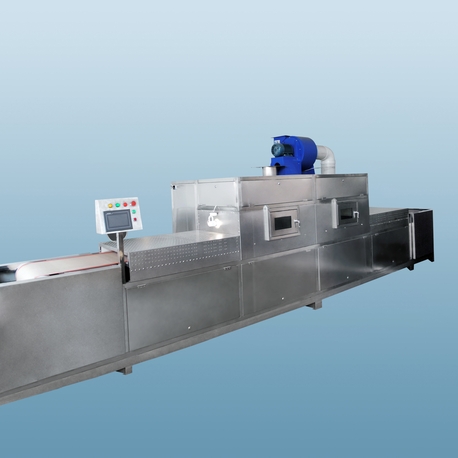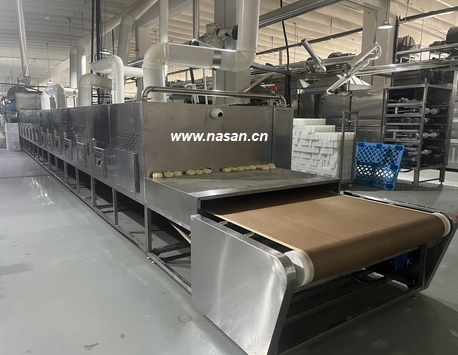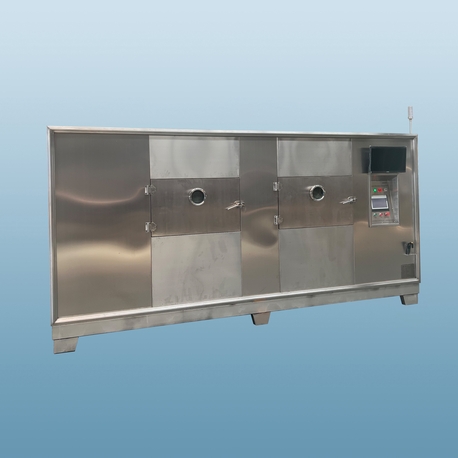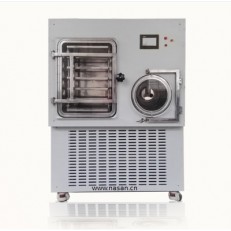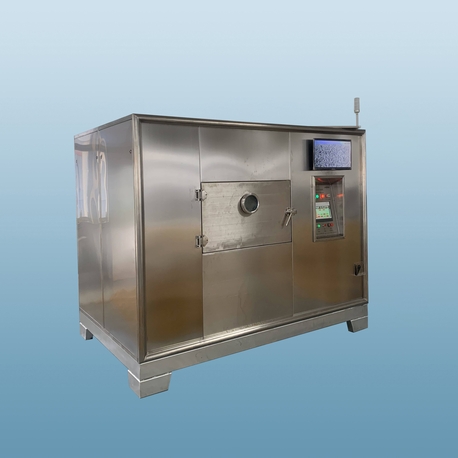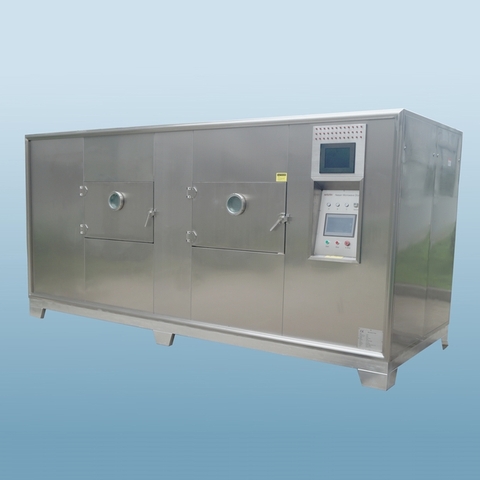When consistent, uniform, and efficient drying is required for solid materials across industries like pharmaceuticals, food, and chemicals, one piece of equipment consistently stands out: the tray dryer. Also known as a shelf dryer or compartment dryer, this workhorse of thermal processing offers a straightforward yet highly effective solution for batch drying operations. Its simplicity, versatility, and reliability have made it a cornerstone technology in countless manufacturing facilities worldwide. This article provides a comprehensive look at the tray dryer, from its fundamental operating principles and types to the critical factors involved in selecting the right unit and understanding the associated investment.

What is a Tray Dryer? Understanding the Basics
A tray dryer is a static, batch-type dryer where wet material is spread in thin layers on trays. These trays are placed inside an insulated chamber, and heated air is circulated over them to facilitate the removal of moisture. The fundamental components of a standard industrial tray dryer include:
Insulated Cabinet: A robust, sealed chamber designed to minimize heat loss.
Trays: Typically made of stainless steel for hygiene and corrosion resistance, these hold the product. They are designed for easy loading and unloading.
Heating System: Can be electric, steam-based, or hot water, providing the necessary thermal energy.
Air Handling Unit: Comprising a fan or blower that circulates the air uniformly across all trays.
Air Ducts: Baffles and ducts designed to ensure even air distribution.
Exhaust System: A portion of the moist air is vented to allow for the introduction of fresh, dry air, maintaining a driving force for evaporation.
The primary appeal of the tray drying process lies in its gentle handling of materials, making it suitable for products that are fragile, heat-sensitive, or whose form must be preserved post-drying.
How a Tray Dryer Works: The Drying Process Step-by-Step
The operation of a tray dryer is a cyclic process that can be broken down into distinct stages:
Loading: The wet material is evenly distributed onto the trays. The layer thickness is critical; too thick, and drying becomes inefficient, too thin, and the dryer's capacity is underutilized.
Heating and Circulation: The dryer door is sealed, and the system is activated. The fan draws in air, which is heated by the heating system. This hot air is then forced through the chamber, passing over and through the trays.
Moisture Removal: As the hot air contacts the wet material, it transfers heat, causing the surface moisture to evaporate. The air, now cooler and more humid, continues its path.
Exhaust and Replenishment: A controlled amount of this humid air is expelled from the exhaust, while a corresponding volume of fresh air is introduced. This maintains a humidity gradient, which is the essential driving force for continuous drying.
Cooling and Unloading: Once the desired moisture content is achieved, the heating system may be turned off, and sometimes ambient air is circulated to cool the product. The dried product is then unloaded from the trays.
This batch drying method offers excellent control over the process parameters, allowing operators to adjust temperature, air velocity, and drying time for different products.
Key Types of Tray Dryers and Their Applications
While the basic concept is universal, several variations of the tray dryer exist to meet specific industrial needs.
Standard Atmospheric Tray Dryer: The most common type, operating at or near atmospheric pressure. It is versatile and cost-effective for a wide range of applications.
Vacuum Tray Dryer: This type operates under a vacuum, which significantly lowers the boiling point of water. This makes it ideal for drying heat-sensitive materials like pharmaceuticals (antibiotics, extracts) and certain fine chemicals that would degrade at high temperatures. The absence of air also prevents oxidation.
Forced Convection Tray Dryer: Emphasizes high-velocity, forced air circulation to enhance heat transfer and reduce drying time. This is the standard for most modern industrial tray dryer units.
The applications of tray drying are vast:
Pharmaceuticals: Drying granules, powders, and pill precursors.
Food Processing: Dehydrating fruits, vegetables, herbs, and spices.
Chemicals: Drying pigments, dyes, and catalyst powders.
Ceramics: Drying formed clay pieces before firing.
Advantages and Limitations of Tray Dryer Technology
Choosing any equipment requires a balanced view. Here are the key pros and cons of a tray dryer.
Advantages:
Versatility: Can handle a wide variety of materials, shapes, and sizes.
Gentle Drying: Minimal product agitation prevents dust formation and particle breakage.
Simple Operation and Maintenance: The straightforward design makes it easy to operate, clean, and repair.
Small Batch Ideal: Perfect for high-value products, pilot plants, and R&D due to its relatively small footprint.
Full Visibility: Trays can be inspected during the process to check drying progress.
Limitations:
Labor Intensive: Loading and unloading trays can be time-consuming and require significant manual labor, though automation is available.
Batch Process: Not suitable for continuous, high-throughput production lines.
Non-uniform Drying: If not designed properly, air distribution can be uneven, leading to variations in moisture content across different trays.
Higher Drying Time: Compared to some advanced dryers like fluidized bed or spray dryers, the tray drying cycle can be longer.
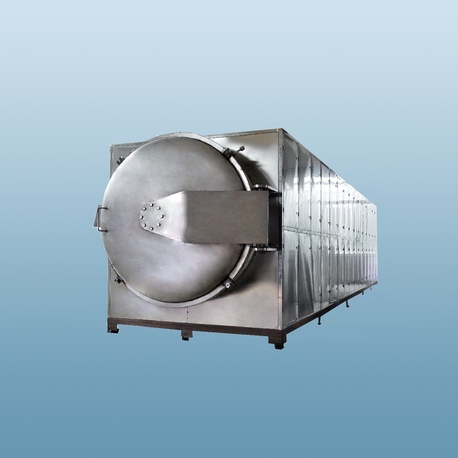
A Practical Guide to Selecting an Industrial Tray Dryer
Selecting the right industrial tray dryer is crucial for operational efficiency and product quality. Here are the primary factors to consider:
Material Characteristics: The properties of your product are paramount. Consider its heat sensitivity, initial and final moisture content, particle size, and stickiness. A vacuum tray dryer is almost mandatory for highly heat-sensitive materials.
Required Capacity and Throughput: Determine the batch size (weight of wet material per cycle) and how many batches are needed per day. This defines the physical size and number of trays required.
Construction Materials: For industries with strict hygiene standards like food and pharma, a 304 or 316 stainless steel construction is essential to prevent contamination and allow for easy cleaning.
Heating Medium: The choice between electric, steam, or hot water depends on your plant's utilities, operating costs, and required temperature range.
Airflow and Control: Look for a dryer designed for uniform airflow. Modern units come with programmable logic controllers (PLCs) for precise control over temperature and time, ensuring batch-to-batch consistency.
Safety and Compliance: Ensure the dryer meets all relevant industry standards (e.g., cGMP for pharmaceuticals, USDA for food). Features like explosion-proofing may be necessary for solvents.
Understanding the Cost and Price Factors of a Tray Dryer
The price of a tray dryer is not a single figure; it varies based on several factors. The initial purchase price is just one part of the total cost of ownership.
Capital Cost: This is influenced by the dryer's size (number of trays), construction material (standard steel vs. stainless steel), type (atmospheric vs. vacuum), and the level of automation. A simple atmospheric tray dryer will be significantly less expensive than a fully automated, GMP-compliant vacuum unit.
Operational Costs: These ongoing expenses include the cost of the heating medium (electricity, steam), labor for loading/unloading, and routine maintenance.
Efficiency and ROI: A well-designed tray dryer with good insulation and an efficient air circulation system will have lower operational costs. Calculating the return on investment involves weighing the increased production speed and product quality against both the capital and operational expenditures.
Frequently Asked Questions (FAQ) About Tray Dryers
Q1: What is the main difference between a tray dryer and a fluidized bed dryer?
A1: The primary difference lies in the state of the material during drying. In a tray dryer, the material remains static on trays, and hot air is passed over it. In a fluidized bed dryer, hot air is blown upwards through the material at a velocity high enough to suspend the solid particles, causing them to behave like a fluid. Fluidized bed dryers typically offer much faster drying rates but are only suitable for fine, granular powders that can be fluidized and may cause more particle attrition.
Q2: How do I prevent uneven drying in my tray dryer?
A2: Uneven drying is often a result of poor air distribution. To mitigate this, ensure trays are not overloaded and the material is spread evenly. Regularly check and clean the air filters and ducts. Some dryers allow for periodic tray rotation during the cycle. Selecting a tray dryer with a well-engineered airflow design, often involving strategically placed baffles, is the best long-term solution.
Q3: Can a tray dryer be used for drying liquids or slurries?
A3: No, a standard tray dryer is not suitable for free-flowing liquids or slurries as they would spill from the trays. For such materials, a spray dryer or a drum dryer would be more appropriate. However, pastes and thick slurries can sometimes be dried on trays if they have a consistency that allows them to be spread and remain in place.
Q4: What are the key maintenance requirements for an industrial tray dryer?
A4: Regular maintenance is crucial for longevity and performance. Key tasks include inspecting and cleaning the heating elements or coils, checking and lubricating the fan motor, ensuring door gaskets are intact to prevent heat loss, cleaning or replacing air filters, and verifying the calibration of temperature sensors and controllers. For a vacuum tray dryer, additional checks on the vacuum pump and system seals are essential.
Q5: Is it possible to automate the loading and unloading process of a tray dryer?
A5: Yes, automation is available to reduce labor intensity and improve efficiency. This can involve automated tray loading systems that spread the material onto trays and robotic arms or conveyor systems that move the trays in and out of the dryer chamber. While this adds to the initial price of the tray dryer, it can provide a significant return on investment through increased throughput, improved consistency, and reduced labor costs in high-volume or 24/7 operations.




